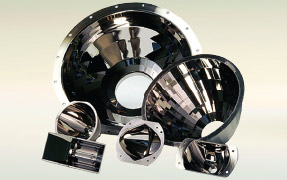Eric Betzig: Beyond the Nobel Prize -- New approaches to microscopy
Pursuing new approaches to microscopy is the next step for one of three 2014 chemistry laureates, who says the honor for super-resolution may have come early.
Eric Betzig is a group leader at Janelia Research Campus of the Howard Hughes Medical Institute (HHMI) in Ashburn, VA.
Betzig is trained as an experimental physicist, and he made waves in that field early on by helping to develop a technique known as near-field microscopy, which brought into focus structures that scientists had long considered too small to see with a light microscope. As a graduate student at Cornell University (MS 1985, PhD 1988), and then during six years at Bell Labs, he advanced the technology to make it more practical for biologists, allowing powerful imaging of dead cells.
Betzig received the 2014 Nobel Prize in Chemistry, along with William Moerner and Stefan Hell, for their development of super-resolved fluorescence microscopy. He and Moerner laid the foundation for single-molecule microscopy, which relies on the possibility to turn the fluorescence of individual molecules on and off. Scientists image the same area multiple times, letting just a few interspersed molecules glow each time. Superimposing these images yields a dense super-image resolved at the nanolevel. In 2006, Betzig utilized this method for the first time.
After leaving Bell Labs, he was vice president of R&D in his father's machine tool company, developing a high-speed motion-control technology based on an electrohydraulic hybrid drive with adaptive control algorithms. Commercial failure of the technology left him unemployed and looking for new directions. This culminated in the invention and demonstration of the superresolution technique photoactivated localization microscopy (PALM) by Betzig and his fellow unemployed colleague and Bell Labs expatriate, Harald Hess. He joined HHMI in 2005, where his lab works on developing new optical imaging technologies for biology.
Betzig presented a plenary lecture at SPIE Photonics West in February 2015.



